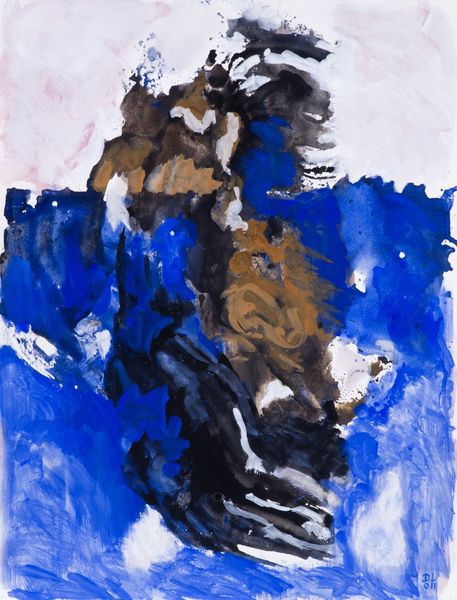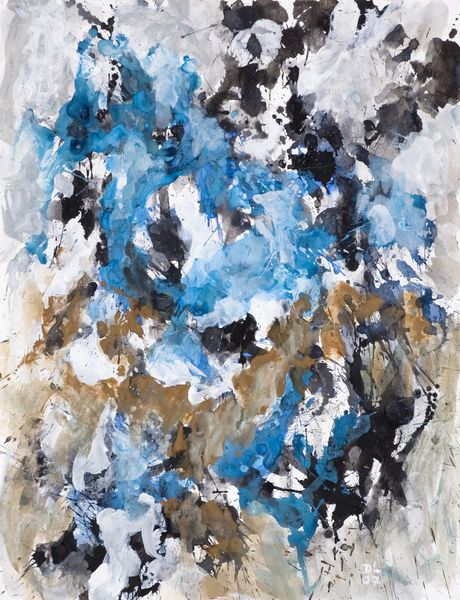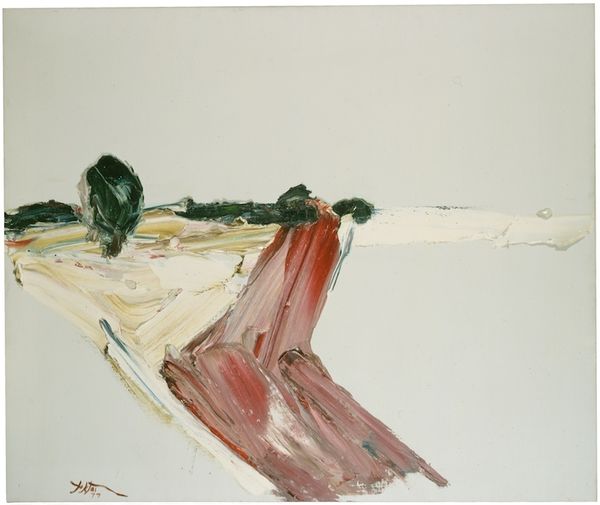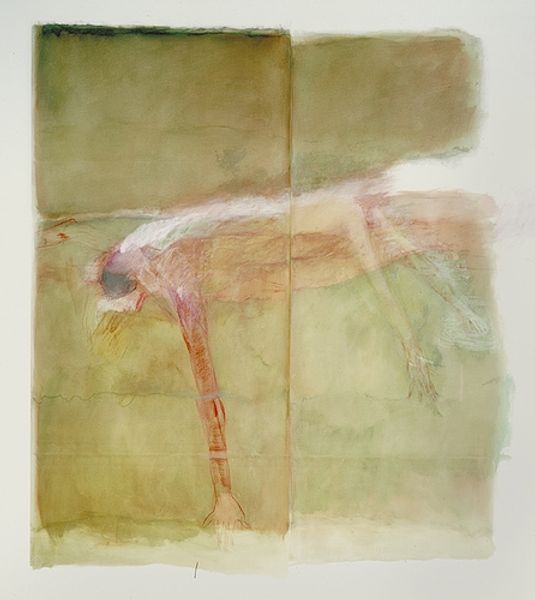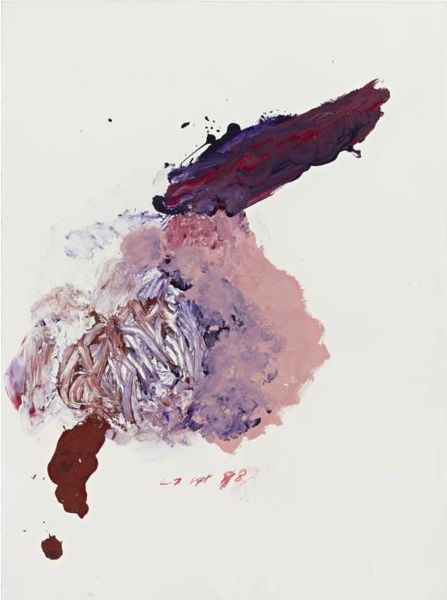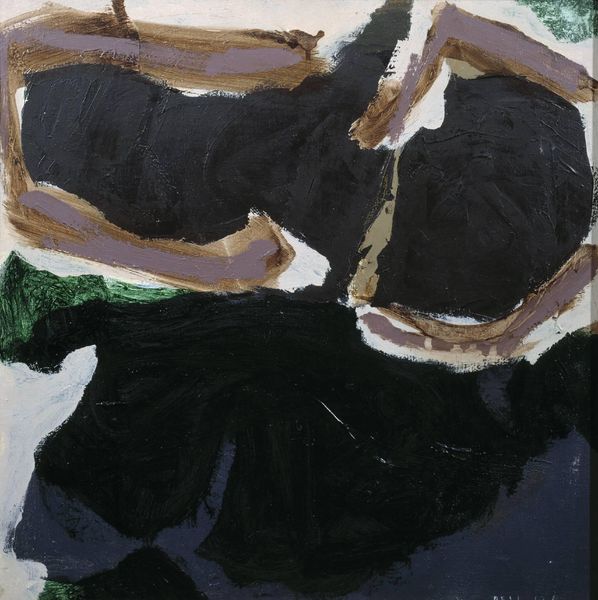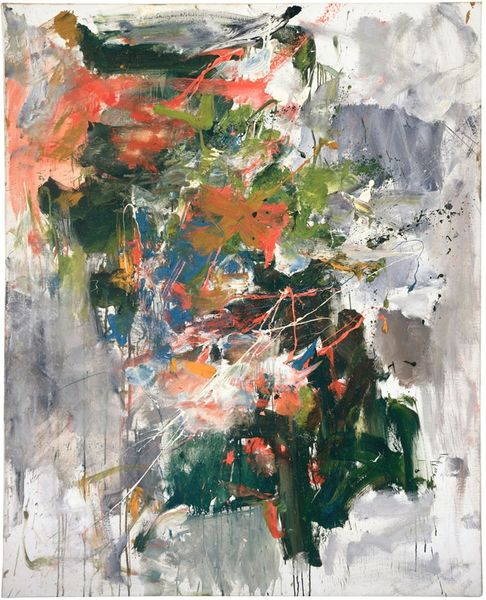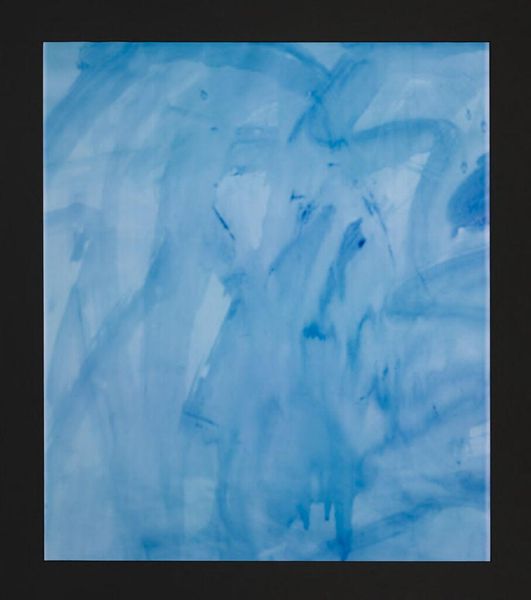
#
abstract expressionism
#
abstract painting
#
impressionist landscape
#
possibly oil pastel
#
fluid art
#
acrylic on canvas
#
underpainting
#
painting painterly
#
watercolor
#
expressionist
Copyright: Courtesy of the office of Rashid Al Khalifa
Editor: So here we have "Desert Paysage 17," a 1992 acrylic on canvas piece by Rashid Al Khalifa. I find its fluidity mesmerizing; it evokes the quiet heat haze of the desert for me. What aspects of its visual structure stand out to you? Curator: Initially, one notes the interplay of hues. The ochre and pale rose, set against these deliberate cerulean strokes—what structural purpose do they serve within the canvas? Do they delineate, enhance, or perhaps disrupt the purported landscape? Editor: I see how those blue strokes offer an unexpected linear contrast. The form isn't immediately obvious; is it the absence of clearly defined shapes part of the work's intent? Curator: Precisely. Observe the layering, the paint application itself. Khalifa invites contemplation on the medium. It is an interplay between control and chance. Do you see in this tension the work’s strength? Editor: It’s like controlled chaos, and those translucent layers contribute to that impression. Would you then describe the underpainting as a structural element as well? Curator: Indeed. It provides a chromatic foundation, subtly influencing the subsequent layers. Consider the texture – how does the layering impact the tactile and optical qualities? Editor: It does lend a certain depth, an almost three-dimensionality despite the flatness of the canvas. I hadn’t thought about it in such structured terms, I was mainly responding to its overall color palette. Curator: But consider how the artist employs color and texture not merely for representation, but to structure a visual and emotive experience. That is, perhaps, the desert within the ‘Paysage.’ Editor: Seeing your breakdown clarifies that it's far more than just a landscape; it's a study of artistic elements in conversation. Thank you! Curator: My pleasure. By analysing the visual rhetoric of painting, we gain profound insight into the artist’s vision.
Comments
No comments
Be the first to comment and join the conversation on the ultimate creative platform.


